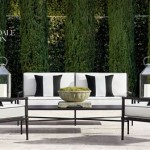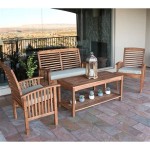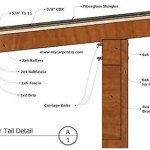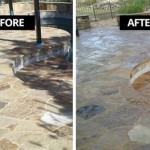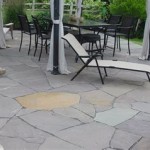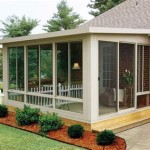Aquascaping Your Patio: Creating a Thriving Pond Ecosystem
Aquascaping a patio pond offers a captivating way to integrate the tranquility of nature into a limited outdoor space. This practice involves designing and constructing a miniature aquatic environment, focusing on aesthetics, ecological balance, and the well-being of any inhabitants. A well-executed aquascape not only enhances the visual appeal of a patio but also provides a habitat for plants and potentially small aquatic creatures, contributing to biodiversity and creating a relaxing focal point.
Creating a successful aquascape requires careful planning and consideration of various factors, including the pond liner, filtration system, plant selection, and the overall design concept. The goal is to establish a self-sustaining ecosystem that requires minimal intervention and thrives with natural processes. This article explores the key aspects of aquascaping a patio pond, providing guidance on creating a beautiful and healthy aquatic environment.
Choosing the Right Container and Liner
The foundation of any patio pond is the container. The size and material of the container significantly influence the overall design and the types of plants and potentially animals that can be accommodated. Pre-formed plastic ponds are readily available and offer durability and a consistent shape. However, they may lack the natural aesthetic desired by some aquascapers. Alternatively, flexible pond liners, typically made of PVC or rubber, can be used to create ponds of any shape within an existing structure or a custom-built frame. This flexibility allows for greater creative control over the pond's design.
Container selection should consider the available space, the desired aesthetic, and the potential weight of the filled pond. Ensure the patio can support the weight, especially for larger containers. The depth of the pond is also important, as it affects the types of plants that can be grown. Deeper ponds allow for a wider variety of aquatic plants, including those that require submerged conditions.
Regardless of the container choice, a proper liner is essential to prevent water leakage and maintain a stable aquatic environment. When using a flexible liner, select a material specifically designed for pond applications. These liners are UV-resistant and non-toxic, ensuring the safety of plants and any aquatic life. Proper installation of the liner is crucial to prevent punctures and leaks. Be sure to smooth out any wrinkles and secure the edges of the liner to prevent it from slipping.
Establishing a Balanced Ecosystem: Filtration and Planting
Maintaining water quality is paramount in an aquascape pond. Unlike larger ponds, patio ponds have a limited volume of water, making them more susceptible to fluctuations in water chemistry and the buildup of organic waste. A proper filtration system is crucial for removing debris, ammonia, and other harmful substances, keeping the water clean and healthy for plants and potential inhabitants.
Several types of filtration systems are suitable for patio ponds. Small submersible pumps with integrated filters are a common and effective choice. These pumps draw water through a filter sponge or other media, removing particulate matter and providing biological filtration. The biological component of the filter relies on beneficial bacteria that convert harmful ammonia into less toxic substances. Regular cleaning of the filter media is necessary to maintain its effectiveness. Alternatively, pre-fabricated filter systems designed for small ponds are available, offering a more comprehensive filtration solution.
Planting is not just about aesthetics; plants play a vital role in maintaining a balanced ecosystem. Aquatic plants absorb nutrients from the water, reducing algae growth and providing oxygen. A variety of plants should be selected to create a visually appealing and ecologically diverse environment. Submerged plants oxygenate the water and provide shelter for small creatures. Floating plants, such as water lilies, provide shade and help to regulate water temperature. Marginal plants thrive in shallow water along the edges of the pond, adding visual interest and further filtering the water.
When selecting plants, consider their growth habits and potential size. Avoid overly aggressive plants that could quickly outcompete others. Native aquatic plants are generally well-suited to the local climate and can contribute to supporting native insect and amphibian populations. Proper planting techniques are essential for ensuring the plants' survival. Use aquatic potting mix specifically formulated for pond plants, and avoid using garden soil, which can release excessive nutrients and cloud the water.
Design and Aesthetics: Creating a Visual Masterpiece
The aesthetic appeal of an aquascape patio pond is just as important as its ecological function. The design should complement the style of the patio and create a visually harmonious environment. Consider using natural materials, such as rocks and driftwood, to create a more natural look. Rocks can be used to create ledges and hiding places for aquatic life, while driftwood adds visual interest and provides a surface for algae to grow.
The arrangement of plants and rocks should be carefully considered to create a balanced and visually appealing composition. Avoid overcrowding the pond, as this can detract from its beauty and hinder plant growth. Use different heights and textures of plants to create visual interest. Group plants in odd numbers to create a more natural look. The placement of rocks should also be intentional, creating a sense of depth and perspective.
Lighting can significantly enhance the beauty of an aquascape pond, especially at night. Submersible lights can be used to illuminate the water and highlight the plants and other features. Consider using LED lights, which are energy-efficient and long-lasting. The color temperature of the lights can also affect the overall mood of the pond. Warmer tones create a more inviting and relaxing atmosphere, while cooler tones can create a more dramatic effect.
The surrounding environment can also be incorporated into the design. Consider adding potted plants around the pond to create a seamless transition between the aquatic and terrestrial environments. A small pathway leading to the pond can encourage visitors to explore the aquatic landscape. The sound of flowing water can also add to the tranquility of the patio pond. A small pump can be used to create a gentle waterfall or fountain, adding both visual and auditory interest.
Furthermore, personalizing the aquascape to reflect individual tastes is important. Small decorative ornaments, such as miniature bridges or figurines, can add a touch of whimsy and personality. However, avoid using too many decorations, as this can detract from the natural beauty of the pond. The goal is to create a balanced and harmonious environment that reflects the individual's aesthetic preferences.
Finally, remember to research any potential additions to the pond, especially if considering introducing aquatic animals. Different species have different needs regarding water quality, temperature, and food. Introducing incompatible species can disrupt the ecosystem and lead to the decline or death of some inhabitants. Careful planning and research are crucial to creating a thriving and balanced aquascape patio pond.

Patio Pond Container Water Garden Mini Ponds Aquascape

How To Create An Easy Container Water Feature Nature Build Landscaping

Container Water Gardens Mini Ponds Aquascape Patio

Aquascape Patio Pond Green Slate 32 Free Supplies

Aquascape 32 Green Slate Patio Pond

Patio Pond Kits From Aquascape Universal Supply

Call Us 888 713 7771 Aquascape 98860 Aquatic Patio Pond Water Garden 40 Inch Round Desert Granite

Best S And Support Aquascape Patio Pond Desert Granite 40 Extra Charges Apply Supplies Usa

Round Patio Ponds By Aquascape Webb S Water Gardens

Aquascape Aquatic Patio Pond Water Garden With Bamboo Fountain Kinetic Features
Related Posts

